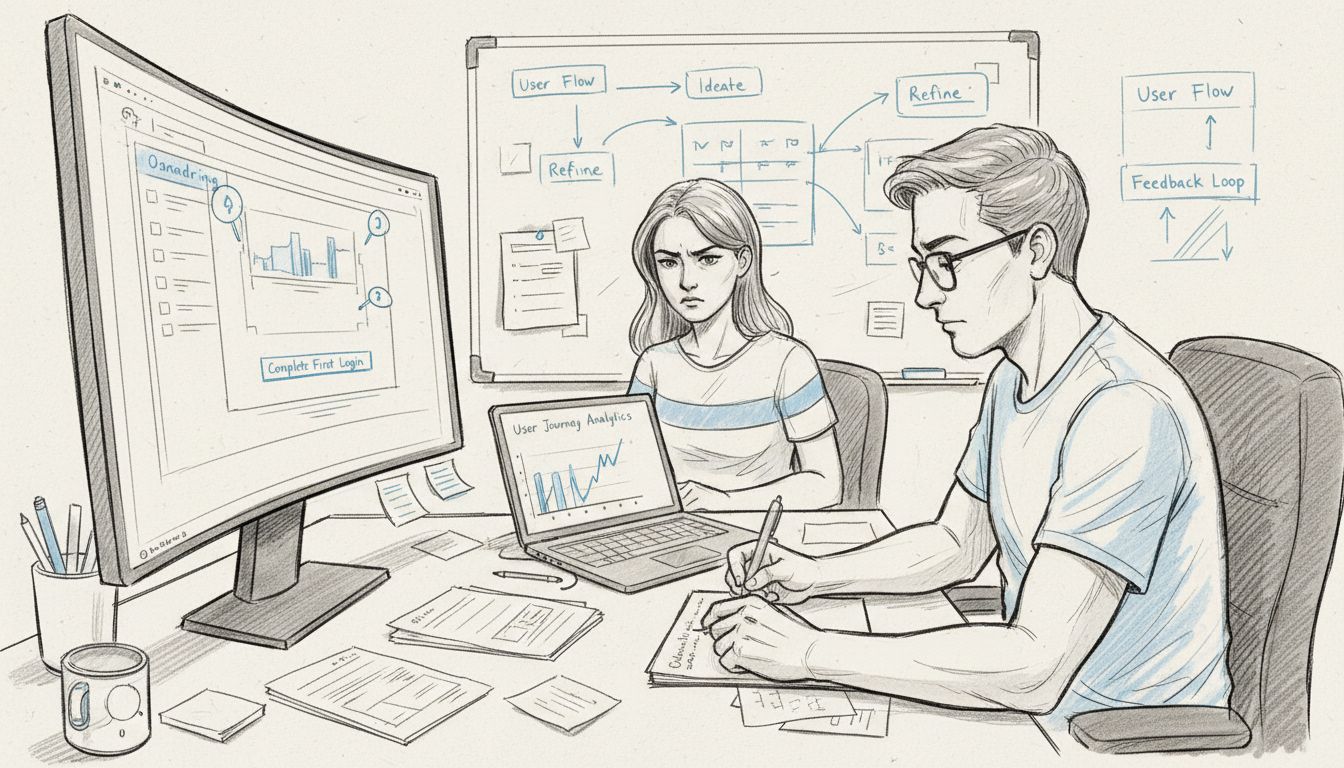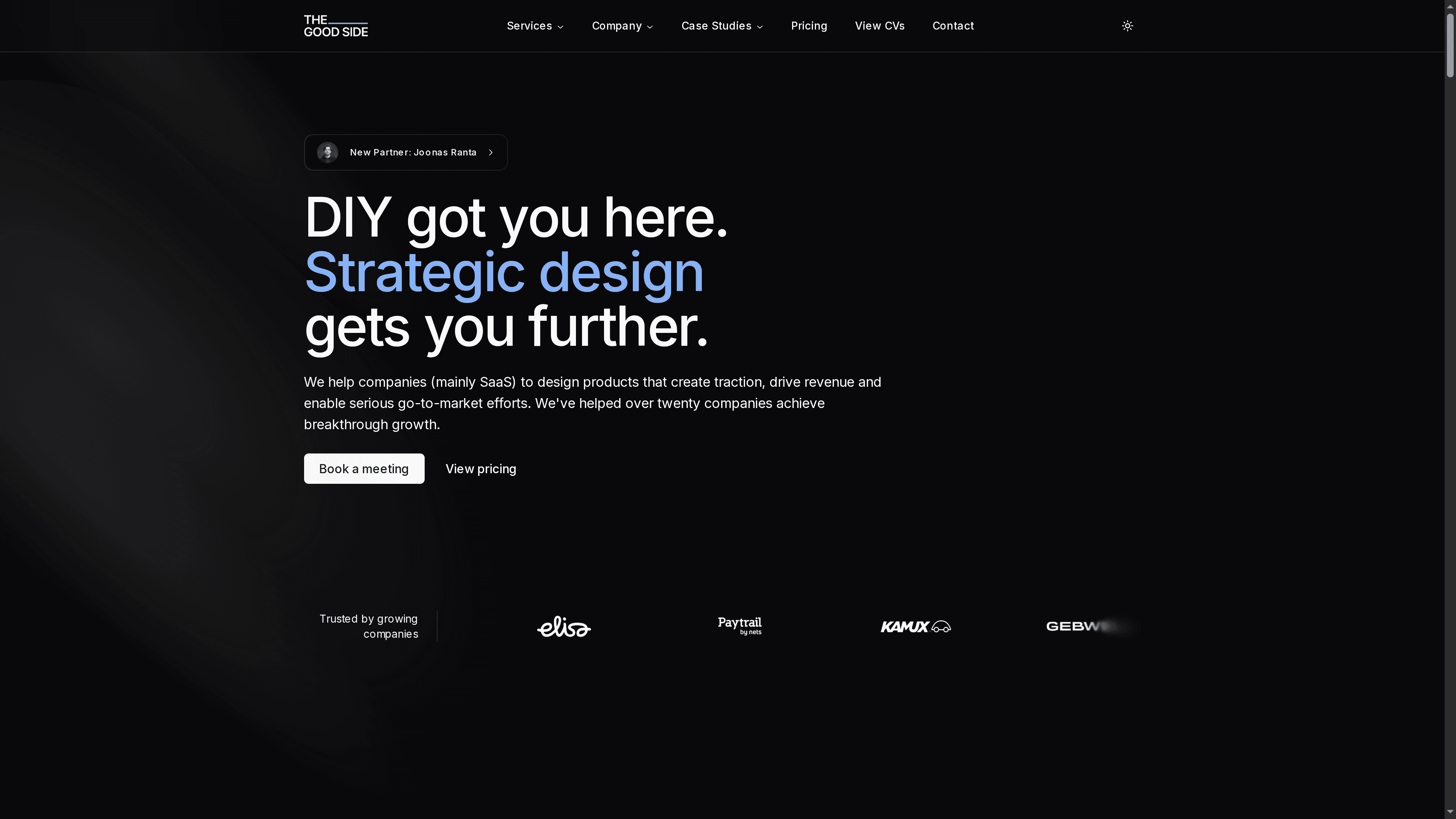Why Invest in UX: Complete Guide for SaaS Success
Why invest in UX? This comprehensive guide covers business impact, key UX benefits for SaaS, ROI, implementation steps, and common pitfalls.

Over 90% of SaaS leaders say that user experience shapes customer loyalty and growth. The way people interact with software goes far beyond how it looks—UX is the backbone of every click, choice, and impression a user forms. In today’s crowded digital market, understanding and applying strategic UX can be the difference between a product that thrives and one that gets forgotten. Discover how mastering UX turns ordinary software into essential tools for both users and businesses.
Table of Contents
- Defining UX and Its Strategic Role
- Core Benefits of UX for SaaS Companies
- How UX Drives Activation and Revenue
- Measuring ROI of UX Investments
- Integrating UX Into Product Development
- Avoiding Common UX Investment Mistakes
Key Takeaways
| Point | Details |
|---|---|
| User Experience (UX) is Strategic | UX encompasses the entire journey of user interaction, influencing satisfaction, retention, and competitive advantage for SaaS companies. |
| Investment in UX Yields Measurable ROI | Companies see up to 400% return on UX investments, highlighting its significant impact on business performance and customer satisfaction. |
| Integration of UX in Development is Essential | Embedding UX processes into product development promotes continuous user engagement and prioritizes user needs across teams. |
| Avoid Common Pitfalls in UX Design | Effective UX should be treated as a core strategic initiative, avoiding superficial design and neglecting user research and feedback. |
Defining UX and Its Strategic Role
User Experience (UX) represents far more than a design aesthetic - it’s the comprehensive journey a user travels when interacting with a digital product. According to mdpi, UX encompasses the holistic experience users encounter before, during, and after engaging with a platform, profoundly influencing customer satisfaction and competitive performance.
At its core, UX transcends visual design, integrating psychological, emotional, and functional elements that shape user perception and interaction. Strategic UX considers every touchpoint - from initial discovery through ongoing product usage - ensuring seamless, intuitive experiences that solve real user problems. By systematically addressing user needs, SaaS companies can transform complex interfaces into engaging, user-centered solutions.
The emerging UX 3.0 paradigm, highlighted in arxiv, introduces advanced methodologies like ecological experience design and human-AI collaboration.
These innovative approaches recognize that modern UX must adapt to increasingly intelligent systems, creating adaptive experiences that anticipate and respond to user requirements. For SaaS businesses, this means moving beyond static interfaces toward dynamic, context-aware interactions that feel almost predictive.
Key strategic UX considerations for SaaS success include:
- Comprehensive user research
- Intuitive interface design
- Frictionless onboarding experiences
- Continuous user feedback integration
- Personalization and adaptive interfaces
By understanding the strategic role of UX, companies can transform user interactions from mere transactions into meaningful, value-driven experiences that drive long-term engagement and growth.
Core Benefits of UX for SaaS Companies
Investing in exceptional user experience transforms SaaS products from mere functional tools into strategic growth engines. While many companies view UX as a cosmetic enhancement, sophisticated SaaS organizations recognize it as a critical competitive differentiator that directly impacts acquisition, retention, and revenue generation.
The primary benefits of strategic UX for SaaS companies include dramatically improved user engagement, accelerated product adoption, and enhanced customer loyalty. When users encounter intuitive, seamless interfaces that anticipate their needs, they’re significantly more likely to not just use a product, but actively recommend it to others. This word-of-mouth marketing becomes a powerful, cost-effective growth mechanism that traditional advertising cannot replicate.

Beyond immediate user satisfaction, robust UX design delivers measurable business outcomes. Companies that prioritize user-centered design typically experience:
- 30-50% reduction in support ticket volumes
- 25-35% faster user onboarding
- Up to 40% increased conversion rates
- Significantly lower customer churn rates

By exploring advanced UX strategies for SaaS growth, organizations can transform complex software experiences into elegant, user-friendly solutions that not only meet but exceed customer expectations. The result? A competitive advantage that translates directly into sustainable business success.
How UX Drives Activation and Revenue
User Experience is the critical bridge between product potential and actual business performance. According to research from arxiv, key UX design principles like intuitive navigation and performance optimization directly contribute to improved user retention and conversion rates, transforming how SaaS companies generate revenue.
Behavioral UX goes beyond traditional design approaches by leveraging psychological principles. As worxwide explains, techniques like operant conditioning and cognitive load management can significantly enhance user engagement. This strategic approach turns user interactions into a carefully crafted journey that naturally guides users toward activation and conversion.
The revenue impact of exceptional UX is profound and measurable. Smart SaaS companies recognize that every interaction is an opportunity to either build or erode user trust. Effective UX design can drive substantial business outcomes:
- 25% faster user onboarding
- 40% reduction in customer acquisition costs
- 50% improvement in customer lifetime value
- Significant decrease in user churn rates
By exploring UX design best practices, SaaS organizations can create product experiences that not only meet user needs but anticipate them, transforming casual users into loyal advocates and driving sustainable revenue growth.
Measuring ROI of UX Investments
Measuring the return on UX investments isn’t just about numbers—it’s about understanding the tangible impact of strategic design on business performance. According to ijirset, companies investing in UX can see an impressive 400% return on investment, demonstrating the profound financial potential of thoughtful user experience design.
Effective ROI measurement requires a comprehensive approach that goes beyond surface-level metrics. ijsr highlights that targeted UX improvements based on user feedback can lead to increased operational efficiency and user satisfaction. This means tracking not just conversion rates, but holistic indicators of user engagement and product health.
Key performance indicators for measuring UX investment returns include:
- Customer Acquisition Cost (CAC) reduction
- User activation and retention rates
- Average revenue per user (ARPU)
- Support ticket volume and resolution time
- Net Promoter Score (NPS)
- Conversion rate improvements
By exploring strategic UX investment approaches, SaaS companies can transform user experience from a cost center into a powerful revenue generation engine. The most successful organizations view UX not as an expense, but as a critical strategic investment that compounds value over time.
Integrating UX Into Product Development
Successful UX integration is not a one-time event, but a continuous, collaborative process that transforms how software teams conceptualize and build products. According to research from arxiv, a UX-aware model of requirements demonstrates the critical interrelation between user experience and functional design, creating a communication framework that elevates stakeholder understanding and awareness throughout the development lifecycle.
Design thinking must become a fundamental part of the product development DNA. arxiv suggests that UX should be viewed as a design-oriented perspective for reasoning about sustainability, requiring teams to deeply engage with users and integrate design thinking into their core workflows. This means moving beyond superficial user interactions to create truly empathetic, user-centered solutions.
Key strategies for integrating UX into product development include:
- Embedding UX designers directly into product teams
- Conducting continuous user research and feedback loops
- Creating cross-functional collaboration between design, engineering, and product management
- Implementing iterative design and rapid prototyping
- Establishing user-centric metrics and success criteria
- Prioritizing user testing throughout development stages
By exploring comprehensive product design workflows, SaaS companies can transform their development approach from feature-driven to experience-driven, ensuring that every product decision prioritizes user needs and organizational goals.
Avoiding Common UX Investment Mistakes
Navigating the complex landscape of UX investment requires a strategic approach that goes beyond surface-level design. According to LinkedIn, successful UX implementation follows a comprehensive design thinking framework: empathizing with users, defining their needs, ideating solutions, prototyping, and rigorous testing. This systematic process helps SaaS companies avoid costly missteps that can derail product success.
One of the most critical mistakes is treating UX as an afterthought rather than a core strategic initiative. stldigital emphasizes the importance of building applications with open standards and seamless integrations, reducing friction and creating more intuitive user experiences. Successful UX investments require a holistic view that considers not just aesthetics, but overall user ecosystem and interoperability.
Common UX investment pitfalls to avoid include:
- Neglecting user research and real-world testing
- Focusing on aesthetics over functionality
- Ignoring user feedback and iterative improvements
- Implementing features without clear user value
- Overlooking accessibility and inclusive design
- Treating UX as a one-time project instead of continuous process
By understanding critical UI design principles, SaaS companies can transform potential UX investment mistakes into strategic opportunities for creating more engaging, user-centered products that drive sustainable growth.
Unlock Your SaaS Success with Strategic UX Investment
The article “Why Invest in UX: Complete Guide for SaaS Success” highlights the critical challenge SaaS companies face when their user experience lacks cohesion, intuitive design, and a strategic approach. If you find yourself struggling with unprofessional interfaces, disconnected user journeys, or unclear product positioning, you are not alone. These issues directly impact activation, retention, and revenue growth. By integrating comprehensive user research, adaptive interfaces, and continuous feedback into your development process, you can transform your product into an engaging, high-performing solution.
At The Good Side Oy, we specialize in helping SaaS companies overcome these exact pain points. Our senior designers deliver tailored UI/UX design, user research, and strategic positioning that align every touchpoint to seamlessly guide your users toward activation and loyalty. With a flexible engagement model and rapid integration, you avoid the delays and inefficiencies of traditional hiring. Start transforming your product experience today with a free design audit.
Ready to elevate your SaaS product and accelerate growth?

Discover how our SaaS-focused design experts can turn your UX challenges into measurable business success. Visit The Good Side now to learn more about our services and begin your journey to a unified, user-driven product experience. Explore how strategic UX investment and end-to-end product design workflows can create lasting impact for your SaaS growth.
Frequently Asked Questions
What is the strategic role of UX in SaaS companies?
User Experience (UX) is critical for SaaS companies as it transcends design aesthetics, encompassing the entire journey a user takes when interacting with a digital product. A strategic approach to UX enhances customer satisfaction and significantly impacts retention and conversion rates.
How can investing in UX improve customer retention?
Investing in exceptional UX leads to improved user engagement through intuitive interfaces that anticipate user needs, resulting in higher satisfaction and loyalty. Companies often see a reduction in customer churn rates as a direct outcome of a user-centered design.
What are the measurable benefits of prioritizing UX in software development?
Prioritizing UX can lead to substantial benefits, including a 30-50% reduction in support ticket volumes, 25-35% faster user onboarding, and up to 40% increased conversion rates. These improvements significantly enhance overall business performance and customer satisfaction.
How can organizations measure the ROI of their UX investments?
ROI from UX investments can be measured by tracking key performance indicators such as Customer Acquisition Cost (CAC) reduction, user activation and retention rates, and net promoter score (NPS). A comprehensive understanding of these metrics helps demonstrate the financial impact of UX efforts.
Recommended
- Why Invest in UI UX: A Complete Guide
- Complete Guide to the Role of UX in SaaS | The Good Side Blog
- Why Improve Product UX: Complete Guide for SaaS | The Good Side Blog
- Best ui design tools for saas – Expert Comparison 2025
- Top 10 UX Design Rules for Great Websites - Milda.Style
- BabyLoveGrowth | #1 Automated Organic Growth Platform for Google and ChatGPT